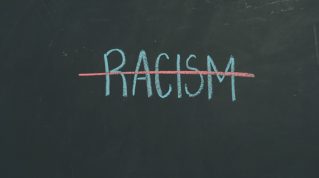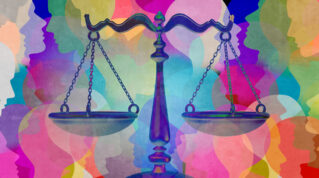Today the Runnymede Trust and our partners at Freelands Foundation launch Visualise, the first major research into race and ethnicity in GCSE art education. Our findings confirm what art educators have been saying for years: we’re at crisis point.
Students are selecting arts subjects at declining rates, there are well known difficulties in teacher recruitment, retention and in the allocation of resources. This cannot be detached from what many in the education space note as the devaluing of arts subjects through policies which have increased status and value to subjects outside the arts. Whilst the contours of these broader issues are widely known, what has received less attention is the issue of representation in the subject.
Our research found that the GCSE art curriculum remains overwhelmingly narrow. Only 8.4 per cent of artists referenced in GCSE art exam papers are artists of colour. Among these, just 2.3 per cent are from Black (1.54 per cent) or South Asian (0.74 per cent) backgrounds.
This is in stark contrast to what students and teachers alike are asking for. Two-thirds of secondary school students want to study artists from a wider range of ethnic backgrounds, and 90 per cent of the teachers we surveyed said that supplementary resources dedicated to the work of minority ethnic artists would aid their teaching.
Students from all backgrounds, but especially those from communities of colour, told us how detached their art lessons feel from their own personal experiences. As a person of working-class, Bangladeshi heritage, the experiences they shared resonated with my own experiences of school from over 30 years ago.
I studied art like someone with the ‘access’ seats at the back of an auditorium with restricted view: there, but not quite included like others with whom I shared that same space. Neither did I feel comfortable or represented in ‘arts’ spaces like galleries, and I carried a similar sense of intruding into a world that was not mine on school visits. It feels extraordinary to me that decades later, despite some progressive work at developing an inclusive curriculum and gallery outreach programmes, students still feel out of place in these spaces.
Teachers lack the tools to engage with issues around race and identity
Improving the art education journey and experience is important not just for students of colour or those interested in studying art, it matters for all students more generally. Art education in school offers a representation of the world and its artistic heritage. It teaches students broad transferable skills they will carry through life. In the best art lessons, students are taught to think creatively and innovatively and to explore their emotional selves in ways that are not nourished in other parts of their education.
What is clear from our research is that, even where there is clear and good intention from teachers to provide broad and diverse art lessons, teachers lack the confidence and tools to engage with issues around race and identity in their classrooms in a sensitive and meaningful way.
I was a teacher for over 20 years in East London. I fully understand the pressures that teachers are under. They are overworked, under-resourced and enormously devalued. Despite clearly doing the best they can to support diverse art practices within their classrooms, their efforts are rooted in a system that is not designed to support attempts to improve experiences of art education.
At a time of political and economic crisis, it may appear frivolous to focus on art education. But in many ways it is precisely the time we should. Not only are the arts a vibrant part of the economy but, in terms of cultural identity and belonging, the arts are also the space that tells powerful stories about who ‘we’ are and what we value.
When so much of our identity and values are articulated through artistic representation, we need to ensure that there is a healthy diversity of artists that are entering that space and that young people are energised and encouraged to pursue arts careers and contribute to that artistic imaginary.







Your thoughts